A teacher named Kerri recently emailed me to ask:
What do you do for that student that continually chooses to misbehave? We have tried everything but nothing fazes him and it’s sending a message to to the other students in my class that I have a different standard of behavior for him. I feel like I argue and nag all day with him and that isn’t the type of teacher I usually am.
If you can relate to Kerri, here are a few things to consider.
1) Don’t take the behavior personally
Unfortunately, there’s a kid like this in almost every classroom. Unless the student only misbehaves in your classroom, the problem is probably not with you. Don’t take it personally, and don’t feel like you are the cause of this child’s issues. The way you choose to interact with this child certainly impacts him and influences his behavior, but you cannot control him.
Remind yourself: I am not responsible for any choices but my own. I am not responsible for the root of his issues and refuse to blame myself for them. I will not waste my time and energy trying to control another person. I will focus on my actions and reactions, and being the type of teacher I want to be.
Kerri’s observation that she isn’t acting like the type of teacher she usually is? That feeling is what tends to be our undoing as teachers. We allow kids with extreme behavioral or socio-emotional issues to turn us into people we don’t want to be. We watch ourselves become the type of teacher who screams at a student, who shames them, who punishes out of desperation and frustration. We hate the person who we’ve become, and we blame the child for making us that way.
But we are responsible for our own choices. No one can make us think or feel in a way that we don’t to. We can choose to love kids when they act in unloving ways. We can make a conscious choice to act from a place of love even when students do not.
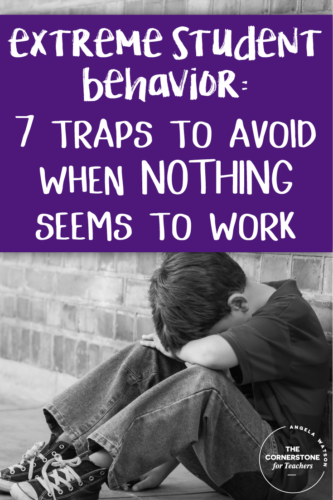
2) Don’t let the student bait you into reacting
Remind yourself that the kids who need love the most will often ask for it in the most unloving ways. Use that thought to stir up the patience you need to respond to misbehavior in constructive ways that don’t just stop the behavior, but pro-actively prevent it from happening again by meeting kids’ underlying needs.
Most of time, you can catch more flies with honey. If you aim to be a calm, empathetic, unshakeable role mode for your students, you will get better results than if you teach kids to fear you or fear punishment from you. Fear is a strong motivator in the short term, but it doesn’t produce the results we want long term. Don’t make tough love your default reaction. Be the mature adult in the midst of tense, emotionally-charged situations instead of letting kids bait you into reacting to them.
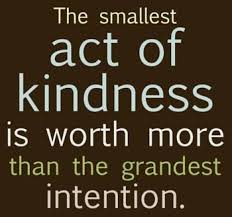
3) Don’t be quick to assume you’ve really tried everything
When you have students that are unresponsive to any type of intervention, the most important thing is to be consistent, calm, and give the strategies you’re trying some time to work.
Everyone THINKS they do this, but most of the time, we really aren’t doing that at all.
I remember sitting in a Child Study meeting fighting back tears and feeling like I wanted to scream because the student was so disruptive in my classroom that I literally could not teach for 2 minutes without an interruption. I was trying desperately to get the child evaluated and was so angry that no one was doing anything and my entire class’ education was suffering because of it.
I was sitting in this meeting and the team asked me what interventions I’d tried. I told them, “Oh, I’ve tried everything! I did this and that and this and that, and none of it worked. See, look, here’s the data to prove it!” And I gleefully laid out all of the documentation that I had resentfully spent so many hours recording.
It was my moment of triumph. I was sure that I had conclusively proved that this kid could not function in the general ed classroom and needed either a one-on-one aide or to be moved to a different setting. You can’t refute data, right? Finally, this kid was going to get the help he needed and I was going to be able to teach the rest of the class.
And the psychologist looked over all of my paperwork very carefully, and then she said to me, “This is very impressive, Angela. You’ve certainly tried a lot of different strategies, and they’re very good. I’m wondering how you were able it implement all of this, considering it’s only the end of September?”
And I froze as the reality of what she said hit me. Because every minute I spent with that child felt like an eternity, and every minute of implementing some intervention felt like a week. The amount of stress I was under had caused me to completely lose perspective and decide this kid was incapable of growth and improvement after just 6 weeks of trying.
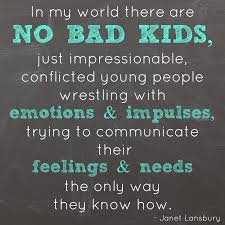
4) Don’t set yourself up for disappointment by counting on a “silver bullet” solution
What I described above is the behavior of a desperate teacher. I was looking for a silver bullet that would cure a lifetime of issues in a child overnight. I tried a new strategy for a couple of days, didn’t see an improvement, and so I’d adjust it and try something else. It’s good to be constantly monitoring and adapting a set of interventions, but I realized that day in the meeting that you can’t implement a new behavior plan on Monday and decide it didn’t work when the kid is behaving the same way on Friday.
Who knows what happened to the child at home that particular week that threw the results off. And who knows what will happen if you stick with the plan, and keep doggedly going back in the classroom each day determined to be patient and loving toward that child. Kids with extreme behaviors tend to have a lot of inconsistency in their lives, and finding out they had a new behavior plan every week is generally not very helpful for them.
What these kids often need more than anything is someone who is willing to stick with them and not get frustrated.
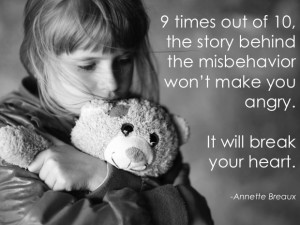
5) Don’t wallow in self-pity and assume YOU are the only one who’s overwhelmed
When you are feeling desperate, remember that the child is feeling desperate, too. Nobody WANTS to bang their head on a table, throw desks, and be ostracized from a room full of people who think they’re weird. Nobody wants to sit alone because they’re incapable of getting along with their peers for 30 seconds. Nobody wants to be lectured and nagged and shamed and punished and questioned and disciplined over and over again. If the kid was capable of making choices that resulted in a better life and better school experience, she or he would do it!
And we have proof of that, because we see those little moments of breakthroughs. We observe as that child is able to be successful for a few minutes at a time in class, and think, why can’t they be like this all the time?
But those few minutes are proof that when the child is in a stable emotional state, she or he chooses to work, chooses to interact socially with peers, and chooses to be successful. When she or he hits a wall or something triggers an issue deep inside, the child isn’t able to be successful any more in that moment. That out-of-control state might be the default, but it’s not what the child really wants. Of course deep down the child would rather fit in and be part of the group and excel in school.
And so our job is to help the child get in that mental state more often.
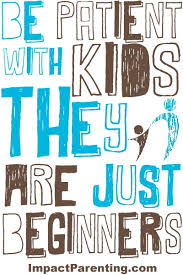
6) Don’t confuse a problem with a person
When you feel yourself getting really, really frustrated, remind yourself that the behavior is meeting some need of the child’s and it makes sense within the context of his or her reality. Kids have their own inner struggles we know nothing about.
Try the 2×10 strategy where you talk to the student about anything she or he wants for 2 minutes a day, 10 school days in a row. Focus not on fixing the kid, but on understanding him or her.
Stop worrying about finding the perfect intervention and start listening, start empathizing, start trying to get to know the student beyond just as a problem for you to fix but as a person for you to learn with and from.
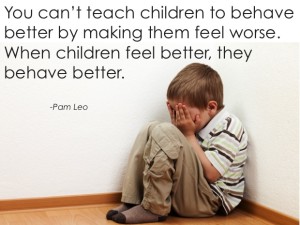
7) Don’t assume that dealing with student misbehavior should be easier for you
We have to help our troubled students feel better. And in the process of doing so, we have to get real about how much hard work is involved with that. Everything I suggested that you do is going to be HARD. It’s going to require a great deal of self-control and energy.
But the more you view the child as a real person, a person you can get to know and maybe even actually like, the less you will resent having him or her in the classroom.
Don’t think for a moment that students don’t sense our feelings toward them. Change your attitude and the rest WILL follow, I promise. You can do this! It’s not going to be easy, it’s going to be worth it.
Want to listen instead of read?
Listen to season 4 episode 10 below,
or subscribe in your podcast app.
This post is based on the latest episode of my weekly podcast, Angela Watson’s Truth for Teachers. A podcast is like a free talk radio show you can listen to online, or download and take with you wherever you go. I release a new 10-15 minute episode each Sunday and feature it here on the blog to help you get energized and motivated for the week ahead. I’d love to hear your thoughts below in the comment section!
The Truth for Teachers Podcast
Our weekly audio podcast is one of the top K-12 broadcasts in the world, featuring our writers collective and tons of practical, energizing ideas. Support our work by subscribing in your favorite podcast app–everything is free!
Explore all podcast episodes
Angela Watson
Founder and Writer
Sign up to get new Truth for Teachers articles in your inbox
Discussion
Leave a Reply
OR

Join our
community
of educators
If you are a teacher who is interested in contributing to the Truth for Teachers website, please click here for more information.



















I really appreciate the School Board being mindful and teaching awareness of Trauma and how it relates to students who have experienced it. Or are currently going through trauma. Listening to children is one of the most powerful tools one can possess. But this takes lovingkindness, patience and hope. When students know you really care for them and are consistent and treat them right the process of their healing can begin.
Also, when children are experiencing trauma or have experienced Trauma education in the way we know it becomes secondary (as it should) and the situation at hand must be addressed.
Having an open ear and possible resolution by providing or directing them to the help they need lets them know that they matter and are cared for.
Well said. Thanks for commenting.
Is there a Go To intro to trauma and how to be more effective in reaching those with high trauma? My district is not on board but I’d LOVE to dig into this, this summer.
Soooo true…Why don’t teachers get it that you DON’T make a child do better by making them feel worse??
Do you have any quick handouts on this topic for teachers to hand out?
I really needed to read this now. About a month ago I had a student with severe ADHD moved into my room. The whole classroom climate has changed and I feel like I cannot get any teaching done. This child is constantly disrupting class and I’ve found myself turning into THAT teacher! 🙁 You gave some great tips to try.
Hang in there my friend! You can do ANYTHING for 2 more months! 🙂
I know there are mixed reviews on the word love, and thusly it’s overusage, but please tell students you love them. Not talking about what they do, or how they do it for that matter. “I love you, and I am so happy you are here.” It will not prevent extreme behaviors, but after a blow, it makes them helps them to understand that you really do love them, and are glad they are here.
I agree 100% with everything you said. Thank you for sharing that.
I agree with the teacher who tells her students she loves them. Kids who feel loved are much more invested in trying to be a part of the class then those who don’t feel loved. I teach a group of very profoundly handicapped and medically fragile young children. Love and compassion are the only way to go with the kids and their families.